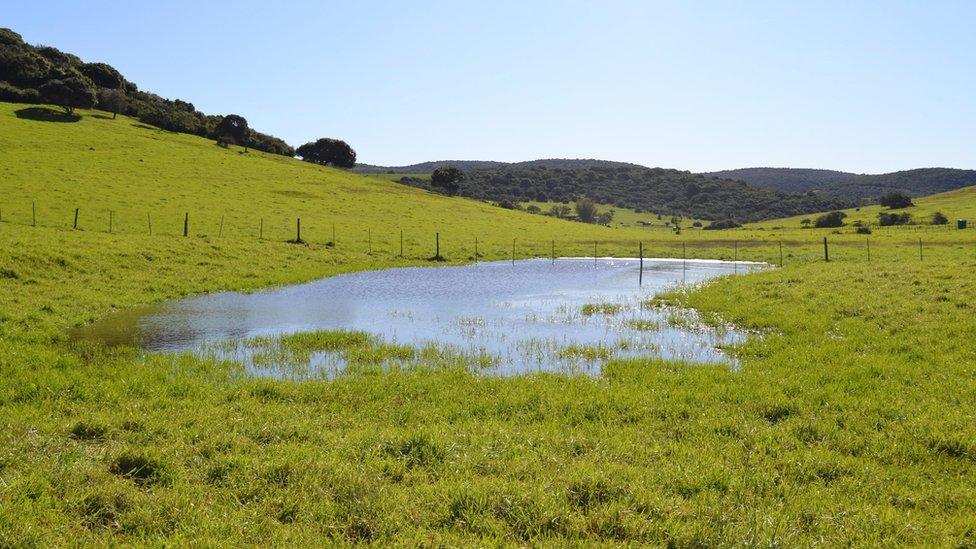Seasonal wetlands face uncertain future
- Published

Ephemeral wetlands provide a variety of ecological services to a wide range of flora and fauna
Seasonal wetlands - ecologically important habitats that become visible during rainy seasons - are facing an uncertain future, warn scientists.
These ephemeral ecosystems support unique flora and fauna species that do not occur in permanent wetlands.
Yet these poorly understood habitats are being lost to future generations as a result of poor land-use practices, the authors observed.
The details have been .
Although these intermittent, shallow-water seasonal natural features are most closely associated with arid or semi-arid landscapes, they are more widespread than generally realised.
For example, more than half of the total river length in the US, Greece and South Africa is made up by sections that have temporary flow.
Changing landscape
"They tend to occur during the rainy season which is when you will see shallow water but for most months of the year, it will appear to be dry," explained co-author Tatenda Dalu, from Rhodes University, South Africa.
The seasonal wetlands are dominated by aquatic biodiversity, he told “óĻó“«Ć½ News.
"You have your plankton, you have your insects, which then brings in the birds to feed on these insects," Dr Dalu said.
"Some of these systems have unique communities of fish, such as the 'lung fish'."
However, these unique ecosystems were vulnerable for a number of reasons, explained Dr Dalu.
"The biggest threat we are seeing at the moment is either the digging up of the ecosystems or making them permanent.
"By making them permanent, people accidently introduce invasive species which then wipe out the unique invertebrate communities."
For example, people look to have a lake full of fish on their land. Very often, the introduced species of fish results in the unique habitat that had previously thrived in the intermittent water being squeezed to the point of becoming locally extinct.
The team also recognised that changes to the climate system were set to alter rainfall and temperature patterns.
The researchers observed in their paper: "In tropical regions of southern Africa, for example, drought is projected to be particularly problematic.
"In such areas, ephemeral wetlands are highly likely to be affected given that ephemeral aquatic environments are internally drained systems, wholly reliant on localised rainfall."
Enriching features
Dr Dalu said the time to act to attempt to make the wetlands more resilient was now.
"One of the most important things for us is to try to map as many of the systems as we can.
"Having a record of where these unique systems exist will be important for the development of any further legislation."
He said that the flora of ephemeral wetlands enriched people's lives, even if they were not aware of the ecological importance of such sites.
"People will tell you about some of the unique flowers they see there," he said.
"That's how people identify them but they do not know anything else about these seasonal wetlands."
- Published25 November 2015